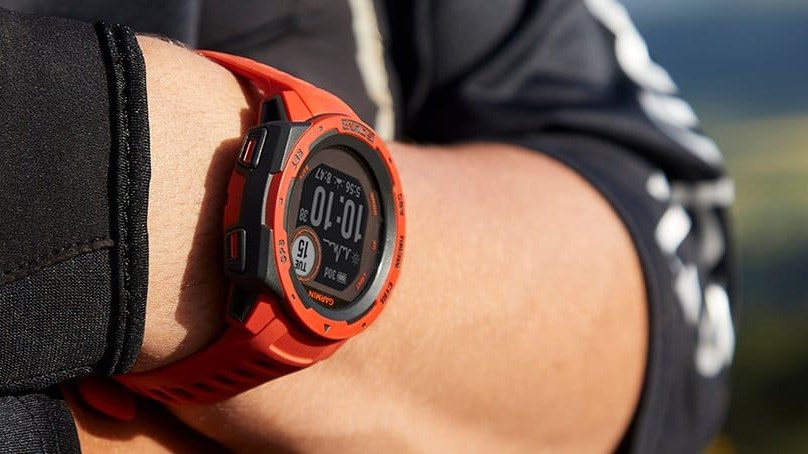
Today, Garmin revealed the Forerunner 265 and 965 – two long-awaited GPS watches, both sporting bright AMOLED displays.
They look great, but the upgrade from the memory-in-pixel screens of the Forerunner 255 and 955 has had an impact on battery life, and depending on how you use them, the new watches might not run for quite as long between charges. That's particularly true of the Forerunner 965, which unlike its predecessor, has no solar variant.
So why is that? After all, surely athletes would be willing to spend a little more on a premium watch for the convenience of not having to plug in so frequently between runs?
The answer lies in a patent registered by the company early last year, which describes the challenges of including photovoltaic material (the stuff that turns energy from sunlight into useable electricity) in an AMOLED watch face.

Right now, all of Garmin's solar watches use something called Power Glass over the face. However, this material isn't fully transparent. That doesn't matter so much for a watch where sheer clarity isn't the main selling point, but if your USP is a gorgeous display then you don't want anything that's going to dull its shine.
"Battery life is important for [sports watches] as it is aggravating for users to stop wearing a device for recharging," says the patent. "Some attempts have been made to equip smartwatches with semitransparent solar panels such as by using a discrete solar cell positioned on top of (or over) the watch's display.
"However, the presence of such a solar cell overlay degrades visibility of the display module. Accordingly, there is a need for an integrated energy-collecting display module that collects solar energy without substantially obscuring its display."
All the latest inspiration, tips and guides to help you plan your next Advnture!
The future's bright...
Thankfully, Garmin's engineers have devised a way around this problem that doesn't involve covering up your watch's brilliant face.
An AMOLED display is made up of green, blue, and red subpixels. Garmin's idea is to place tiny photovoltaic cells in between these subpixels, allowing the watch to harvest solar energy without spoiling its look.
The tricky thing is efficiency. The photovoltaic cells are joined by tiny metal electrodes. The thicker these are, the less energy is lost as heat, but thickening the metal means building it up in layers. By the time you add the second layer, the outer surface of the first has oxidized, which creates extra resistance and makes the cells less efficient.
Garmin's engineers have investigated various ways to get around this problem, including depositing a very fine layer of gold as an antioxidant, but that would be complicated and expensive.
Instead, the company filed a second patent describing how controlled electrical sweeps could be used to break down the oxidation before the second layer of metal is applied, which would be much cheaper than using additional materials.
Of course, a patent isn't a guarantee that a product will ever come to market (just look at how many patents Apple has registered for smart rings), but I'm hopeful that one day soon we might get a Garmin watch that offers both a bright, crisp AMOLED display and extended battery life thanks to solar charging.
- The best cheap GPS watches: track your fitness without breaking the bank

Cat is the editor of Advnture, She’s been a journalist for 15 years, and was fitness and wellbeing editor on TechRadar before joining the Advnture team in 2022. She’s a UK Athletics qualified run leader, and in her spare time enjoys nothing more than lacing up her shoes and hitting the roads and trails (the muddier, the better), usually wearing at least two sports watches.
